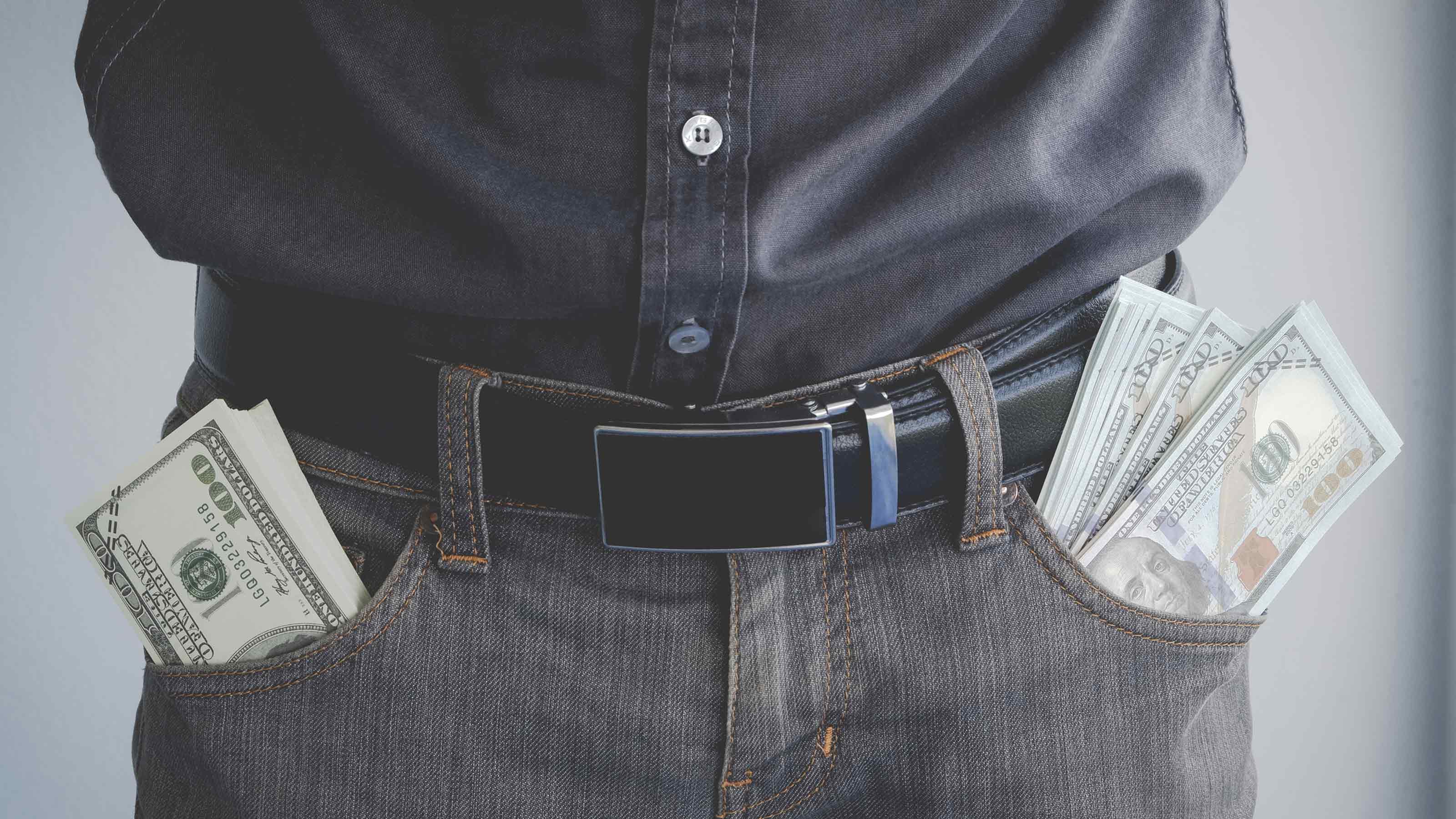Hire a Nanny or Send Your Child to Day Care?
Before you decide, weigh the financial pros and cons of each of these child-care options.

Choosing whether to send your child to day care or hire a nanny is a tough decision to make -- both emotionally and financially. My husband and I recently struggled to decide which of these two care options would be best for our third child and for us.
For our first two children, we hired nannies to watch them. The arrangement was great because I worked from home and was able to eat lunch with my girls most days, and the nannies did a good job of keeping them occupied (and away from me) while I was writing. And financially, it made more sense to hire one person to care for our two kids than to pay for both girls to go to day care.
Our daughters are in school now, so our son is the only child in the family who needs daytime care. This time, we opted for day care because it costs us at least $100 a week less than employing a nanny and, in all honesty, it’s easier.

Sign up for Kiplinger’s Free E-Newsletters
Profit and prosper with the best of expert advice on investing, taxes, retirement, personal finance and more - straight to your e-mail.
Profit and prosper with the best of expert advice - straight to your e-mail.
If you recently had a child or are returning to the workforce and now need child care, here are the pros and cons of day care and nannies.
Day care
Pros. Selecting a day-care facility for your child can be just as difficult as finding a good nanny. But once you’ve found the right fit, day care is a breeze. My husband or I drop off my son and the center’s staff handle everything while we work. I don’t even have to pack a lunch or snacks for him; food is provided at the center. We can have weekly payments automatically deducted from our checking account. And it’s reliable. If his regular care provider is sick, there are others on staff to fill in.
Plus, you can offset some of the cost of day care with tax breaks. You can claim the child-care tax credit if you pay for care for children younger than 13 while you work. You can count up to $3,000 in qualifying child-care expenses for one child, or up to $6,000 for two or more children. The tax credit is worth a percentage of the amount spent on child care. The percentage ranges from 20% to 35%, depending on your adjusted gross income.
However, if your employer offers a dependent-care flexible spending account, that may be a better deal. You can set aside up to $5,000 a year to cover child-care costs for children younger than 13. The money you contribute to an FSA escapes income taxes and Social Security and Medicare taxes. You might be able to take advantage of both tax breaks. See Claiming the Child-Care Credit for more information.
Cons. Most facilities operate during normal daytime work hours. So if you work, say, from the afternoon into the night, day-care hours might not mesh with your work hours. If you have two or more children, then day care might cost more than paying the salary of one nanny to watch all of your kids. And germs are spread so easily among little kids at day care that you might have to frequently take off days from work to care for a sick child (and you’ll still have to pay for those days when he’s home).
Nanny
Pros. Your child doesn’t have to compete with several other children to get the caregiver’s attention. He can interact one-on-one with a nanny in the comfort of his own home, take naps in his own bed and play with his own toys that a multitude of other kids haven’t stuck in their mouths. If you work from home, you’ll have the opportunity to interact occasionally with your child during the day. And a nanny can offer flexible hours and accommodate parents who don’t have typical 9-to-5 work schedules.
Cons. Hiring a nanny is taxing -- literally. I can tell you from experience that dealing with the tax implications of employing a nanny is a pain. You must withhold and pay Social Security and Medicare taxes if you pay a household employee $1,800 or more a year. For 2013 you’ll pay the employer’s share of 7.65% of wages -- 6.2% for Social Security and 1.45% for Medicare --and you’ll withhold the same amount (the employee’s share) from your nanny’s paycheck.
You also have to pay a federal unemployment tax on the nanny’s first $7,000 of wages if you pay her $1,000 or more in any calendar quarter. Your state may levy an unemployment tax, as well. Check with your state’s labor department. The federal unemployment tax is 6%, but you may be able to get a credit of up to 5.4% by paying your state’s unemployment tax. Stephanie Breedlove, head of Care.com HomePay and founder of Breedlove and Associates, a nanny payroll service, says you can offset some of these household employee taxes by taking advantage of the child-care tax credit or a dependent-care FSA (see above)
To pay these so-called nanny taxes, there’s lots of paperwork involved. You must get an employer identification number by filling out a federal Form SS-4 or applying online at IRS.gov. You must also fill out the appropriate form with your state to get an identification number. You must make quarterly estimated payments to cover your extra tax liability (or adjust your tax withholding from your paycheck). You’ll file a Schedule H with your federal tax return in the spring to report household employment taxes. You’re not required to withhold federal income taxes from your nanny’s paycheck, but you can if the nanny asks and you agree. If so, complete a Form W-2, “Wage and Tax Statement,” and a Form W-3, “Transmittal of Wage and Tax Statements.” To avoid hassles, you can pay for a nanny payroll service such as Care.com HomePay, which Breedlove says charges $175 a quarter.
Get Kiplinger Today newsletter — free
Profit and prosper with the best of Kiplinger's advice on investing, taxes, retirement, personal finance and much more. Delivered daily. Enter your email in the box and click Sign Me Up.

Award-winning journalist, speaker, family finance expert, and author of Mom and Dad, We Need to Talk.
Cameron Huddleston wrote the daily "Kip Tips" column for Kiplinger.com. She joined Kiplinger in 2001 after graduating from American University with an MA in economic journalism.
-
 6 Stunning Waterfront Homes for Sale Around the US
6 Stunning Waterfront Homes for Sale Around the USFrom private peninsulas to lakes, bayous and beyond, Kiplinger's "Listed" series brings you another selection of dream homes for sale on the waterfront.
By Charlotte Gorbold Published
-
 Six Reasons to Disinherit Someone and How to Do It
Six Reasons to Disinherit Someone and How to Do ItWhether you're navigating a second marriage, dealing with an estranged relative or leaving your assets to charity, there are reasons to disinherit someone. Here's how.
By Donna LeValley Published
-
 Five Ways to Save on Vacation Rental Properties
Five Ways to Save on Vacation Rental PropertiesTravel Use these strategies to pay less for an apartment, condo or house when you travel.
By Cameron Huddleston Last updated
-
 How to Avoid Annoying Hotel Fees: Per Person, Parking and More
How to Avoid Annoying Hotel Fees: Per Person, Parking and MoreTravel Here's how to avoid extra charges and make sure you don't get stuck paying for amenities that you don't use.
By Cameron Huddleston Last updated
-
 2023 Social Security Tax Wage Base
2023 Social Security Tax Wage BaseWealthier Americans will have more Social Security taxes taken from their paychecks next year because more of their income will be subject to the tax.
By Rocky Mengle Last updated
-
 Young Professionals Could Avoid Six Figures in Lifetime Taxes With an HSA
Young Professionals Could Avoid Six Figures in Lifetime Taxes With an HSAhealth savings accounts Running the numbers shows how health savings accounts could save one couple $160,000 in taxes. With open enrollment coming up, millions of workers should consider this tool’s benefits.
By Matthew Broom, CFP® Published
-
 Answers to Frequently Asked Social Security Disability Questions
Answers to Frequently Asked Social Security Disability Questionspersonal finance Social Security Disability Insurance is there to help those who can’t work, but getting the benefits you need can be confusing and difficult. Read on for answers to some of the most common SSDI questions.
By Steven Perrigo, J.D. Published
-
 3 Main Reasons Why the Government Denies Social Security Disability Benefits
3 Main Reasons Why the Government Denies Social Security Disability Benefitspersonal finance To help improve your chances at being approved for SSDI benefits, it helps to better understand why so many applicants get turned down.
By Steven Perrigo, J.D. Published
-
 Five Big Tax Breaks at Work
Five Big Tax Breaks at Worktax planning Did the 2021 tax refund you expected turn into a surprise tax bill? Taking advantage of your employee benefits package could help you lower your taxable income.
By David Jaeger, CFP® Published
-
 How to Appeal an Unexpected Medical Bill
How to Appeal an Unexpected Medical Billhealth insurance You may receive a bill because your insurance company denied a claim—but that doesn’t mean you have to pay it.
By Rivan V. Stinson Published